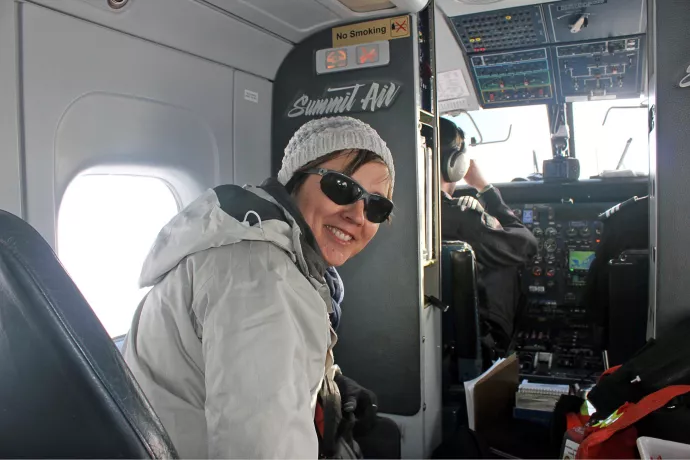
Improving social equity in Ontario’s north
How do we ensure Ontarians in remote northern communities have the same access to essential services as those living in the province’s more populated south?
Tracey Galloway thinks the answer lies in ensuring reliable air transportation. The University of Toronto Mississauga anthropology professor is joining with U of T professors Shoshanna Saxe of Civil and Mineral Engineering and Michael Widener of Geography and Planning to lead a new study on how improving the infrastructure of 29 provincially managed northern Ontario airports could foster equality for the Indigenous Peoples living in these isolated communities. The project has received $120,000 in funding from U of T, including $30,000 from the Faculty of Applied Science and Engineer’s XSeed funding program to promote interdisciplinary research.
“This project came together to look at the concept of remoteness and what it means for service delivery. Governments often define the needs of remote communities in terms of population size or economic development, but what’s clear from my research is that there are lots of other ways to define needs,” Galloway says.
In these remote northern areas, ice roads can only be used a few months per year, and must be rebuilt each year. And thanks to global warming, ice roads are now frozen for increasingly shorter periods, which means fewer opportunities for trucks to deliver goods. As a result, residents are heavily and increasingly dependent on air transportation for almost all essential services and goods: food and potable water, construction materials, education, health care, legal services and mail. However, the airports in these areas are, by southern standards, very small, with short runways and limited safety equipment. These challenges, coupled with difficult weather conditions, mean air transport in remote communities is often unreliable.
The research will take a comprehensive approach by incorporating the perspectives and research practices of anthropology, engineering and geography. Four master’s students from across these disciplines will join the researchers to collect quantitative data from airport administrators, air operators and service providers on the rates of scheduled flights and cargo deliveries. The qualitative research will involve working with Indigenous leaders to gather input from community members on their experiences accessing essential services.
“This is a pretty exciting collaboration for me. Working with researchers in engineering and geography will expose me to new ways of understanding the world and new practical, methodological approaches,” Galloway says. “It will ultimately lead to a rich picture of the needs of Ontario’s northern communities.”
The project will get underway this December, with the bulk of the on-the-ground research happening next summer and fall, and a planned wrap-up date of June 2020. The researchers will try to secure additional funding for the project from the Canadian Institutes of Health Research and the Natural Sciences and Engineering Research Council of Canada.
The main goal is to document how air transportation influences the conditions of people living in these fly-in communities, and provide policymakers with high-quality data so they can make more informed decisions. One outcome Galloway would like to see is a change in how federal food subsidies are calculated for northern communities. She says the Nutrition North Canada program currently uses a model that provides higher food subsidies to High Arctic communities, even though Northern Ontario communities face many of the same access issues and, as a result, exorbitant food prices. "The current subsidy program needs a complete overhaul; it's not meeting the needs of communities."
Says Galloway: “We’re hoping to create a good body of evidence that will reshape our government leaders’ approach to Ontario’s north so they think about transportation not only in terms of resource development, but also as essential for a wide variety of services that contribute to people's well-being.”
